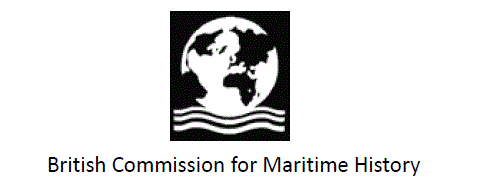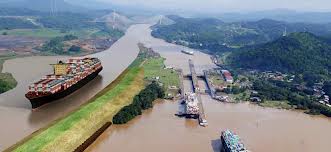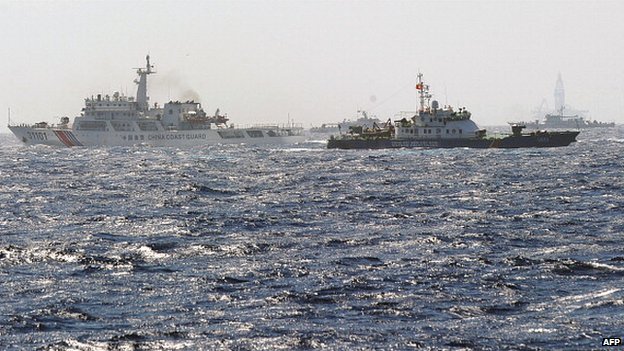By
Richard Scott
Visiting Lecturer, Greenwich Maritime Institute and MD, Bulk Shipping Analysis
Vigorous enlargement has been one of the most prominent features of the world fleet of merchant (commercial) ships in recent years. During the past decade, from 2003 to 2013, the entire fleet almost doubled in size. It was a remarkable achievement involving vast capital investment. Shipowners in many countries participated, although just a small number of shipowning nations remained at the top and together continued to be the dominant players.
Bulk carriers, tankers and container ships comprise the majority of the global merchant ship fleet’s cargo capacity. Much of the growth has been concentrated in the three sectors. Other significant vessel types are gas carriers, multi-purpose and general cargo ships, ro-ro (roll-on/roll-off) vessels, car carriers, refrigerated vessels, cruise ships and offshore service vessels: some of these categories also have seen notable increases.
Expansion in the fleet as a whole has decelerated in the past few years. But it remains brisk and there are clear signs of a continuing upwards trend, although prospects for different ship types vary widely. What are the salient points and why did such a huge enlargement happen in a relatively short period? This article examines the changes and looks at key influences and indications of future developments.
Flamboyant figures
At any point in time, focusing on what happened in the ten years just completed is often a statistical convenience. It is a period of sufficient length to enable trends and patterns to be identified which would not necessarily be apparent in a shorter period. The 2003 to 2013 decade proved especially notable, however. Precisely within this timescale, annual growth in the world fleet of ships accelerated greatly to a rapid average rate, compared with many preceding years when relatively slow increases were recorded.
By the end of last year, the capacity of the world merchant ship fleet, measured in deadweight tonnes, had reached 1,690 million dwt, according to statistics compiled by Clarksons Research. Ten years earlier, at the end of 2003, the total was 873m dwt. The difference between the two figures, 817m dwt, represented a 94 percent increase, resulting from average annual 6.8 percent rises. For comparison, in the four immediately preceding years, fleet increases averaged 2.6 percent annually, and for three years before then the average was 1.3 percent.
Looking at individual fleet sectors classified by ship type, it is clear that growth rates varied quite widely, reflecting differing circumstances (especially trade trends). Among the three largest sectors, comprising at the end of last year well over four-fifths of the world fleet’s entire deadweight capacity, bulk carrier and container ship fleet growth was the fastest. Over the past decade average annual expansion in both categories was about 9 percent. For tankers, a much less rapid but still brisk rate of just over 5 percent was seen. Within the group of other ship types, a noteworthy performance was achieved by the LNG (liquefied natural gas) carrier fleet, averaging 12 percent annual rises.
What were the main influences? Annual capacity changes, upwards or downwards, are mainly caused by the balance between two elements. Firstly, the volume of new ship capacity being introduced, known as newbuilding deliveries. Secondly, the volume of scrapping (recycling) of old or obsolete, inefficient vessels. Ship losses resulting from accidents are a very minor influence. Another element, which has been prominent in some past years, is conversions from one ship type to another, such as tankers converted to bulk carriers.
Within the entire world merchant fleet of all ship types, newbuilding deliveries from shipbuilding yards started to gain momentum in 2003, when 55m dwt was recorded, compared with 46-51m dwt in each of the previous three years. There then followed a remarkably strong acceleration, peaking eight years later in 2011 when 167m dwt was seen, based on Clarksons data. It was a lagged response to the massive ordering which had occurred earlier, with new ships being delivered several years after orders had been placed. Subsequently an abrupt precipitous fall occurred, to 109m dwt in 2013.
Scrapping began to decline in 2003, when 28m dwt of all types of ship was recorded, slightly below each of the two preceding years. In 2005 to 2007 it was very low, at 6-7m dwt annually. Then there was a rapid acceleration to 34m dwt in 2009 and a peak 59m dwt in 2012. This pattern demonstrated again how quickly, sometimes immediately, demolition sales respond to changing shipping market conditions and perceptions (latterly, a sharp deterioration). The scrapping total last year fell back to 48m dwt.
Looking at world fleet composition by shipowning nationality, it is evident that throughout the 2003 to 2013 period, four shipowning nations were dominant: Greece, Japan, China and Germany. Together they consistently comprised almost one-half of the world total, based on UNCTAD statistics. At the decade’s beginning, fleets owned by investors operating in these countries (identified according to the location of the true controlling interest, where the parent company is situated) comprised 46-47 percent of global fleet deadweight tonnage. A few years later the four countries’ proportion rose to 49-50 percent, where it has been maintained.
Although the aggregate proportion changed only slightly over this ten-year period, there were changes in individual countries’ world fleet shares. Top contributor Greece’s share declined after 2003, from 20 percent down to the current 15 percent. Japan’s second position rose by a couple of percentage points to peak at 16 percent, from where it has fallen back to about 14 percent in the past two years. China’s share rose solidly, doubling from 6 percent in 2003 to 12 percent in 2013, rapidly overtaking Germany in the past two years to become the third largest shipowning country.
Perplexing productivity
Ships’ tonnage statistics, whatever measurement is chosen, do not provide an accurate picture of the cargo-carrying work or transportation service performed, however. What is revealed by tonnage statistics is only how much weight or volume can be lifted by ships at a particular point in time, a snapshot view. Actual cargo-carrying work done over a period depends upon ships’ productivity: how efficiently they are operated. That requires much more complicated calculations and there are no comprehensive statistics available for the global fleet as whole.
The amount of cargo carried by an individual ship or fleet of ships within any period, such as twelve months, reflects numerous factors. These factors vary greatly over time and among different trades. Periods when the ship is moving ‘in ballast’ (empty) between loaded voyages, a typical feature of employment in the oil or dry bulk trades, vary substantially. Loaded and ballast voyage duration reflects a ship’s average speed, which is influenced by market conditions and can be modified by the operator. Slow-steaming at below ‘normal’ speed drastically reduces a vessel’s carrying capacity in a specific time period. Delays, often caused by congestion, and idle waiting time in ports or at canals also affects voyage duration. Some cargoes do not fill the entire ship (part-loading). Also, ships periodically are unavailable because of maintenance and dry-docking.
All these well-known aspects influence how productively a ship is employed. Only very rough calculations can be made, relating seaborne trade volumes within each sector to relevant ship deadweight capacity, deriving a ratio: cargo tonnes per deadweight tonne. But this ratio is not always a reliable guide. One main reason is that it is sometimes impossible to identify accurately from available figures which ship types are carrying the cargoes. For instance, large quantities of many minor dry bulk shipments may not be carried by bulk carriers. Consequently, when transport capacity statistics are required, ships’ deadweight (or another tonnage measurement) is usually used, despite imperfections as a measure of cargo carrying capability.
Inspired investment?
Capital investment in new ships is an indicator of fleet growth potential. During the past five years, 2009 to 2013, global investment in newbuilding vessels (based on Clarksons Research data) is estimated at $475 billion. Last year’s total was the highest annual amount, within the period, at $127bn. For individual shipowning countries, this indicator of capacity being added is only partial, because second-hand acquisitions, often a sizeable fleet development component, are not included.
Among the largest shipowning countries already identified, owners based in China spent the biggest sum on new ships in the five-year period, at about $53bn, although owners in Greece were almost at that level, with just under $52bn. Japan’s total was nearly $33bn, while Germany’s figure was much lower at about $14bn.
These enormous investment commitments are reflected in orderbook volumes. Ship orders of all types at shipbuilding yards around the world, measured at year-end, reached a peak at the end of 2008 at 619m dwt, which was more than 400 percent higher when compared with the volume on order six years earlier. Typically, the largest part of an orderbook is scheduled for completion within the following twenty-four months, but orders often stretch out over three or four years ahead. A significant comparison also, emphasising the vast extent of the very high end-2008 peak total, is that it was the equivalent of 51 percent of the existing world fleet’s size at that time.
Five years later, at the end of 2013, the world orderbook had shrunk by almost half to 318m dwt, representing a comparatively low 19% of the now much larger existing fleet. Over the period of five years there had been additional ordering, but newbuilding deliveries from the greater earlier orderbook had outpaced contracts added, resulting in orderbook shrinking. Contracting in 2009 to 2013 had added 537m dwt, while newbuilding deliveries totalled 705m dwt. Also contributing to the orderbook reduction were many cancellations and postponements.
Full speed ahead, or slow-steaming?
Some spectacular new ships have joined the fleet in the past few years. One prominent example is the ‘Triple-E’ series of container ships being introduced by Danish company Maersk, each capable of carrying 18,270 TEU (twenty-foot equivalent unit, the standard capacity measurement used in the sector). These giants, 20 of which have been ordered, are the largest container ships constructed so far, more than twice the size of the biggest container ships existing only a few years ago. Another example is the vast 35-ship fleet of 400,000 deadweight tonnes ‘Valemax’ ore carriers which Brazilian mining company Vale has almost completed introducing, including some chartered long-term from other shipowners. These goliath vessels carry more than double the cargo of a typical large 180,000 dwt capesize bulk carrier commonly used in iron ore trades.
The Maersk and Vale ships, and many others, have been designed for use in specific trades where huge volumes of cargo moving, and extensive contractual commitments, probably guarantee more or less full employment over their lifetimes. By contrast, a great number of ships, especially those built for the bulk trades, do not have long-term employment arranged, and their profitability remains heavily dependent upon evolving shipping (freight) market conditions. What are their prospects?
To begin answering this question, a brief look at some fundamental global shipping market features is needed. It is evident that shipping markets are cyclical, reflecting a continuous adjustment process, which aims to balance demand for seaborne transportation services with the supply of services. One key aspect is how participants attempt to anticipate events. Dynamic players try keeping one step ahead, enabling maximum benefits to be derived from any changes in market circumstances, upwards, downwards or sideways. Considerable risk-taking is often involved, based in many cases upon deep and detailed analysis and sound assessments of the interaction of market influences or, in other cases, based upon sheer speculation.
Reflecting shipping market characteristics, particularly in the bulk sectors, decisions on massive capital investments can be made and implemented relatively quickly. Compared with major capital expenditure in other industries, shipping investment often does not entail numerous years of planning and obtaining necessary official approvals. In the bulk trades investment can be a virtually instantaneous activity. That perception of the decision-making process may not be entirely accurate, however, because quick decisions are often based upon lengthy continuous assessments of prospects.
How these characteristics profoundly affect events has been illustrated dramatically in the past few years. In 2009, immediately after global shipping markets plummeted, ordering of new ships also fell steeply to about one-fifth of the volume (in deadweight tonnage) seen at the peak two years earlier when markets were very strong. Then, in the next year, 2010, despite an already vast orderbook resulting from the long previous freight market boom, many shipowners sensed market recovery. Newbuilding orders in that year bounced back rapidly, increasing by almost three-fold. Several years later, in 2013, another huge ordering surge was unleashed when many owners had renewed optimism that the long-awaited market recovery was approaching. The 2010 ordering surge is already having a large impact on global fleet growth, with resulting additional excess capacity delaying the rebalancing of supply with demand.
Currently, over-capacity is still a problem in the three main sectors – bulk carriers, tankers and container ships – to varying degrees. It seems entirely possible that this feature could persist for some time ahead. Continuing a trend seen since 2008, the gap between demand for ships, and the supply of ships, is still wide, leading to mainly subdued markets with low freight rates. Global seaborne trade’s overall growth and demand for shipping services has largely recovered from the setback following the 2008 global financial crisis and its aftermath, an exceedingly severe world recession. Trade has been increasing at a robust pace. But the world fleet of ships and transportation capacity provided (mostly) has been expanding too quickly.

















